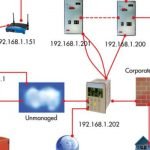Contents
What Is Asset Management?
Businesses that oversee a large number of physical objects need an automated way to track, categorize, and manage their assets, whether they’re products, machines, vehicles, or really any object for which the business is responsible. Losing track of an asset can negatively affect sales and the bottom line, so businesses need to oversee all of their assets in a timely and reliable fashion.
From copiers to trucks, most objects your company possesses need to be tracked by different facets of the business, from accounting to facilities management. Up until recently, this process was usually handled by using spreadsheets, with a manual inventory to update anytime something changed. Someone would generate the asset report for accounting purposes and, if you were lucky, your spreadsheet supported formulas and macros to make things easier.
Businesses today have more assets to manage than ever before, especially with the increase of mobile devices used in the workplace. We also have increasingly complex cloud technologies, license-based and usage-based software, and updates happening more rapidly. As average employee tenures grow shorter and more devices are mobile, companies’ data security is also a key priority. Managers and their support teams working in the field may need specialized reporting, customization, and features that aren’t readily visible to the employees assigned specific business assets. This is where today’s asset management software can help. Modern asset management systems hosted in the cloud let businesses manage assets without the cost and maintenance of owning a server.
The first thing to consider when narrowing down your asset management application options is figuring out exactly which assets you need to track. Think specifically about the assets that cost your company money. Do you have a mobile device lab or a number of traveling employees who have company phones you need to track? If you are primarily dealing with servers, desktop, and laptop computers, do you also need to manage your software licenses, updates, and ensure efficient distribution of those licenses? Once you’ve identified the problem to solve, you can select the asset management system that delivers the best value in the long term.
There are two main groupings of cloud-hosted asset management systems to consider. Some solutions are part of an overall IT helpdesk solution. This first class of products may integrate with support tickets, provide end-user portals, and act as a module in a larger solution aimed at supporting company staff and technologies. The second class of products is specialized software aimed at solving a business problem that goes beyond IT support but allowing for asset management as well.
IT Helpdesk Plus Asset Management
Asset Panda, BMC Track-It!, and SysAid are all examples of comprehensive IT helpdesk solutions that also allow for asset management. When it comes to tracking networked computers, you need to consider which platforms you will use in tracking your assets and also the platforms the administrators and IT professionals will use to assign assets, perform inventory, and run the reports. Some tools include network detection via scanning while others use spreadsheet import or manual entry. Other use agents like the open application programming interface (API) in Asset Panda; in others you can edit after scanning label codes, like in GoCodes.
It is important to consider what makes sense for your budget. Management tools are available at several price levels. Do you want a one-time purchase or a monthly subscription for support? Not all tools can handle the same number of assets so there is no sense in paying for more capacity than you need. Purchasing a bulk number of assets and user accounts for the year can qualify you for additional discounts in some solutions, such as GoCodes. Others, like Asset Panda, offer flat-rate discounts and specials as limited-time offers to help teams get started.
While each asset management solution I reviewed is capable of tracking your computer systems, they vary widely in their strengths. Your priorities will dictate which is right for your company. If security is a top priority, then which kind of security appeals to you? Specifically, do you want to prevent theft as your top priority? GoCodes offers a physically trackable, tamper-proof sticker system which both marks the asset and lets you find it in real time based on geolocation. The physical ability to apply the sticker means there are few limits on what you can track.
However, it does not tell you any details regarding what software licenses are installed on that stickered laptop, what version it is running, or how often it has been used. You could use a different asset management system for a more detailed notification when a specific app is launched, but if you have a custom piece of machinery not represented on your network, then you have no way to track that item. Our Editors’ Choice MMSoft Pulseway offers security by requiring two-factor authentication (2FA) with encryption from mobile devices. By limiting entered assets to networked devices, ghost machines are quickly dealt with. To get such detailed and timely updates, you give up some flexibility; for real-time accuracy you can’t manually add assets if they are not networked in some way.

What Are You Tracking?
Is the real-time status of your servers, cloud environments, or websites more important than physically tracking your assets? If current networked status is more important than geolocating a physical device, then MMSoft Pulseway could be a good investment despite the higher cost. If you consider the relief of an employee’s ability to remote in to network devices from anywhere, then the reliability gains and happiness of your support staff could make the higher price irrelevant when you factor in possible lost productivity. Ease of use might be most important to you, depending on the technical capability of those setting up the tools. If you have savvy IT pros and even a few developers on staff, then some of the solutions offer APIs with their asset management platform, making it easily customizable for programmers. Do you have non-networked computer assets? If so, then a key feature for you might be the ability to add assets by using means other than network detection agents.
BMC Track-It! and SysAid are examples of customizable systems that might be a good fit because they do offer customization and APIs; other systems are configurable without any coding. This means the best value for your company is going to depend on the assets you are tracking and on the capability of the people you have working for you. It will also depend on their availability to customize the product and perform setup. Asset Panda offers support at all purchase levels, giving smaller businesses the answers they need. Asset Panda is in between a solution nearly anyone can use (like GoCodes) and a system where you might need coding ability to take full advantage of the available features.
Some of the systems are easier to use because their sole purpose is asset management. MMSoft Pulseway was the easiest overall setup we tried. GoCodes is extremely simple to use, but consider that you need to remember to apply and scan in the stickers. You must have the stickers applied in order to track the assets. Provide a checklist and your training staff can do this. SysAid and BMC Track-It! are fully featured helpdesk support tools, each including a user-facing portal for reporting and tracking helpdesk tickets. The user interfaces (UIs) are more complicated, though, involving nesting concepts that make it harder to see all of your assets in one view. A fully integrated helpdesk system to complement your asset management might be worth the tradeoff of a simplified UI for your business.

Investing in the Right Tool
With any investment, the initial cost and the costs to customize (if needed) and train your staff are considerations. You want to be sure you not only purchase the right software, but that you also have the level of support you need. For some groups, a tutorial video will be enough. Other teams may need full classroom training. Those doing deep customization and using the APIs might need live developer support. For other groups, the API documentation along with user forums could be enough.
A major consideration with regard to the return on your investment in asset management software is how much time you will save at each stage of the process. How much time is needed to enter new assets or import existing assets, and add them to your inventory? Then there is the time you save by using notifications to detect outages and respond quickly to issues occuring once your servers are live.
Reporting, depreciation, and exporting must also be considered, including compatibility with your specific accounting needs. Select the best asset management tool for your company by comparing prices, features, and the possible time savings of having your asset data in one place. Once you have identified the cloud-hosted solutions with the best fit for your priorities, try them on your own devices before making a final decision.
The savings, in both time and money, to purchase and host an asset management system may have been prohibitive in the past. Yet, because of lower prices and the advanced feature complexity offered by older solutions, as well as newer, more automated solutions, asset management has changed. The flexibility, low upfront cost, and shorter commitment are worth giving Software-as-a-Service (SaaS) asset management tools a fresh look.
Featured Asset Management Software Reviews:

ManageEngine AssetExplorer Review
Pros: Cloud-hosted and browser-based. VM-based asset support. Tracks networked and non-networked assets. Relationship mapping. Familiar Windows-style user interface.
Cons: No mobile application. Limited remote control tools work only for Mac and Windows-based machines. One module of a larger system may not suffice for smaller offices.
Bottom Line: ManageEngine AssetExplorer is an affordable solution for global or distributed companies that need a full-featured, cloud-hosted asset management system.
[“source=in.pcmag.”]





